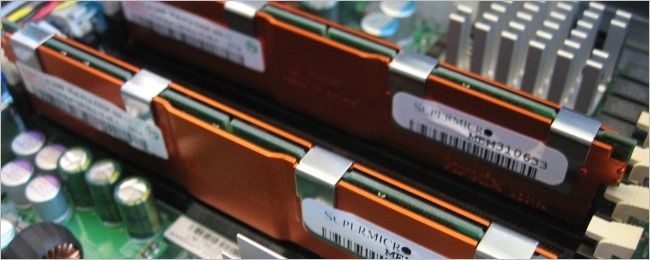When you are adding RAM to a computer, does it really matter if the sticks have unequal amounts of memory or do you always need them to have equal amounts of memory? Today's SuperUser Q&A post has the answers to a curious reader's questions.
Today's Question & Answer session comes to us courtesy of SuperUser---a subdivision of Stack Exchange, a community-driven grouping of Q&A web sites.
Photo courtesy of redjar (Flickr).
The Question
SuperUser reader LanceLafontaine wants to know if using unequal amounts of RAM really does decrease performance:
This page describes the RAM specifications for many of the MacBook laptops. In the section for my laptop (13" Pro, Late 2011), it says:
- Additional Notes: For best performance, fill both memory slots, installing an equal memory module in each slot.
This is not the first time that I have heard of this phenomenon, and it is definitely not specific to Apple. Why is this the case? Other than the obvious decrease in available memory, why would it be worse to run with 6 GB (1*4 GB plus 1*2 GB) than with 8 GB (2*4 GB)?
Does using unequal amounts of RAM cause a decrease in performance or is it just a myth?
The Answer
SuperUser contributors David Schwartz and x have the answer for us. First up, David Schwartz:
With equal amounts of memory in both slots, memory can be interleaved so that successive chunks of memory alternate slots. That way, memory access gets distributed to both slots almost perfectly evenly, allowing their bandwidth to combine.
With uneven amounts, memory cannot be interleaved and has to be mapped first to one stick and then the other. A program that is accessing a large contiguous chunk of memory will find almost all of its access going to one stick and there will be no bandwidth combination.
Followed by the answer from mVincent:
- Additional Notes: For best performance, fill both memory slots, installing an equal memory module in each slot.
The likely technical explanation here is that your MacBook (motherboard) supports dual-channel architecture and thus requires two identical memory modules. Benchmarks suggests that it gives a 5-10 percent performance boost.
- Why is this the case? Other than the obvious decrease in available memory, why would it be worse to run with 6 GB (1*4 GB plus 1*2 GB) than with 8 GB (2*4 GB)?
When two non-identical memory modules are used, the motherboard will run the memory modules at the speed of slowest module.
Have something to add to the explanation? Sound off in the comments. Want to read more answers from other tech-savvy Stack Exchange users? Check out the full discussion thread here.

